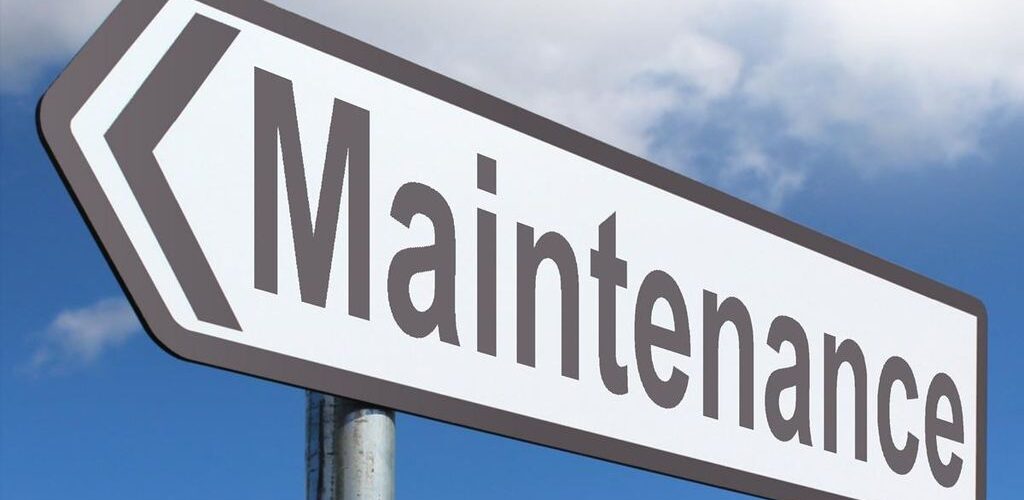The Ultimate Guide to Web Hosting and Maintenance for Your Online Business

Understanding Web Hosting and Its Importance
What is Web Hosting?
Web hosting is the service that allows individuals or organizations to make their websites accessible on the internet. Hosting providers allocate space on web servers where websites can store their files, such as HTML documents, images, and videos. Think of it as renting space on the internet for your website to live.
Why Your Business Needs Reliable Hosting
Reliable web hosting is crucial for your business’s online success. It affects your website’s performance, speed, reliability, and security. A good hosting service ensures that your site is always accessible, loads quickly, and is protected from cyber threats. This, in turn, enhances user experience and can significantly impact your business’s reputation and sales.
Different Types of Web Hosting
There are several types of web hosting available, each suited to different needs:
- Shared Hosting: Multiple websites share the same server resources. It’s cost-effective but may suffer from slower speeds during high traffic periods.
- VPS Hosting: Virtual Private Server hosting offers a dedicated portion of a server’s resources, providing better performance and more control than shared hosting.
- Dedicated Hosting: You get an entire server to yourself, offering maximum performance and control, but at a higher cost.
- Cloud Hosting: Uses multiple servers to balance the load and maximize uptime. It’s scalable and reliable, making it ideal for growing businesses.
Choosing the right type of hosting is like laying a strong foundation for your website, impacting how well it performs and how users experience it.
Choosing the Right Web Hosting Provider
Selecting the right web hosting provider is crucial for your online business. It’s not just about comparing prices and packages; it’s about finding a partner committed to supporting your growth. A good hosting provider will offer the technical specifications you need, robust security measures, reliable customer support, and the scalability to grow with your needs.
Setting Up Your Web Hosting Account
Setting up your web hosting account is a crucial step in bringing your website to life. Let’s break it down into manageable steps to make the process as smooth as possible.
Registering a Domain Name
The first thing you need is a domain name. This is your website’s address on the internet. You can register a domain name through your hosting provider or a separate domain registrar. Make sure to choose a name that reflects your brand and is easy to remember.
Configuring DNS Settings
Once you have your domain name, you’ll need to configure the DNS settings. This step ensures that when people type your domain name into their browser, they are directed to your website. Most hosting providers offer a simple interface to manage DNS settings.
Installing Essential Software
After setting up your domain and DNS, it’s time to install the essential software. This usually includes a content management system (CMS) like WordPress, Joomla, or Drupal. Many hosting providers offer one-click installations for these platforms, making it easy even for beginners.
Setting up your web hosting account is the ultimate guide to hosting and maintenance for your website. Understanding web hosting types, choosing a provider, setup, maintenance tasks, and troubleshooting common issues for website scalability.
By following these steps, you’ll be well on your way to launching a successful website.
Essential Maintenance Tasks for Your Website
Regular Backups
Regular backups are essential to protect your website’s data. Imagine losing all your content due to a server crash or cyber-attack! To avoid such disasters, schedule backups weekly or even daily, depending on how often you update your site. While most hosting providers offer automated backup solutions, it’s always a good idea to have a manual backup as well.
Updating Software and Plugins
Keeping your website’s software and plugins up to date is crucial for security and performance. Updates often include patches for security vulnerabilities and new features that can enhance your site’s functionality. Make it a habit to check for updates regularly and install them promptly.
Monitoring Website Performance
Monitoring your website’s performance helps you identify and resolve issues before they affect your users. Use tools to track your site’s speed, uptime, and resource usage. Regular performance checks can help you spot bottlenecks and optimize your site for a better user experience.
Consistent maintenance is key to ensuring your website runs smoothly and securely. Don’t wait for problems to arise; proactive care can save you time and headaches in the long run.
Here’s a quick checklist to keep your maintenance tasks organized:
- Weekly Tasks:
- Check for broken links
- Install updates and patches
- Monthly Tasks:
- Review website analytics
- Clean up website code
- Check for malware
- Quarterly Tasks:
- Optimize for search engines
- Conduct a content audit
- Create backups
- Annual Tasks:
- Conduct a website review
- Redesign your website if needed
Enhancing Security for Your Hosted Website

Ensuring the security of your hosted website is crucial to protect your data and maintain user trust. Here are some essential steps to enhance your website’s security:
Implementing SSL Certificates
SSL certificates encrypt the data transferred between your website and its visitors, making it harder for malicious actors to intercept sensitive information. Selecting a secure web hosting provider is critical for the foundational security of your website. Most hosting providers offer free SSL certificates, but you can also purchase advanced options for added security.
Setting Up Firewalls
Firewalls act as a barrier between your website and potential threats. They monitor incoming and outgoing traffic and block suspicious activities. Ensure your hosting provider includes firewall protection and consider adding additional layers of security with web application firewalls (WAFs).
Regular Security Audits
Conducting regular security audits helps identify vulnerabilities and address them before they can be exploited. Schedule periodic reviews of your website’s security protocols and update them as needed. This proactive approach ensures that your site remains secure against evolving threats.
Regularly reviewing and updating your security measures is essential to stay ahead of potential threats and maintain a secure online presence.
Scaling Your Hosting as Your Business Grows
When to Upgrade Your Hosting Plan
As your website gains more traffic and demands more resources, it’s crucial to upgrade your hosting plan. Scalability is key here; you want a hosting provider that allows you to enhance your resources—like bandwidth and storage—without any downtime or major hassles.
Load Balancing and Traffic Management
To handle increased traffic efficiently, consider implementing load balancing. This technique distributes incoming traffic across multiple servers, ensuring no single server gets overwhelmed. It helps in maintaining optimal performance and reliability.
Exploring Cloud Hosting Options
Cloud hosting is an excellent option for growing businesses. It offers flexibility and scalability, allowing you to easily adjust resources based on your needs. With cloud hosting, you can ensure that your website remains fast and reliable, even as your traffic scales up.
As your business grows, your hosting needs will evolve. Make sure your hosting provider can keep up with your growth to avoid any disruptions.
Troubleshooting Common Hosting Issues
Diagnosing Downtime
Server downtime can be a major headache for any online business. Regular monitoring is essential to catch issues early. Use tools like UptimeRobot or Pingdom to keep an eye on your server’s status. If downtime occurs, check your hosting provider’s status page for any ongoing issues.
Resolving Slow Loading Times
Slow loading times can frustrate your visitors and impact your search engine rankings. Optimize your website’s performance by compressing images, leveraging browser caching, and minimizing CSS and JavaScript files. Regularly monitor your website’s performance using tools like Google Analytics to identify areas for improvement.
Handling Security Breaches
Security breaches can be disastrous. Ensure you have a robust security plan in place. Regularly update your software and plugins, use strong passwords, and implement two-factor authentication. If a breach occurs, act quickly to mitigate damage and restore your site.
Regularly monitor your website’s performance using tools like Google Analytics. Pay attention to metrics such as page load times, bounce rates, and conversion rates. Identify areas for improvement and take necessary actions to optimize your website’s performance.
Facing issues with your hosting? Our comprehensive guide on Troubleshooting Common Hosting Issues is here to help. From cPanel to VPS, we cover it all. For more detailed solutions and expert support, visit our website and explore our extensive range of services.

